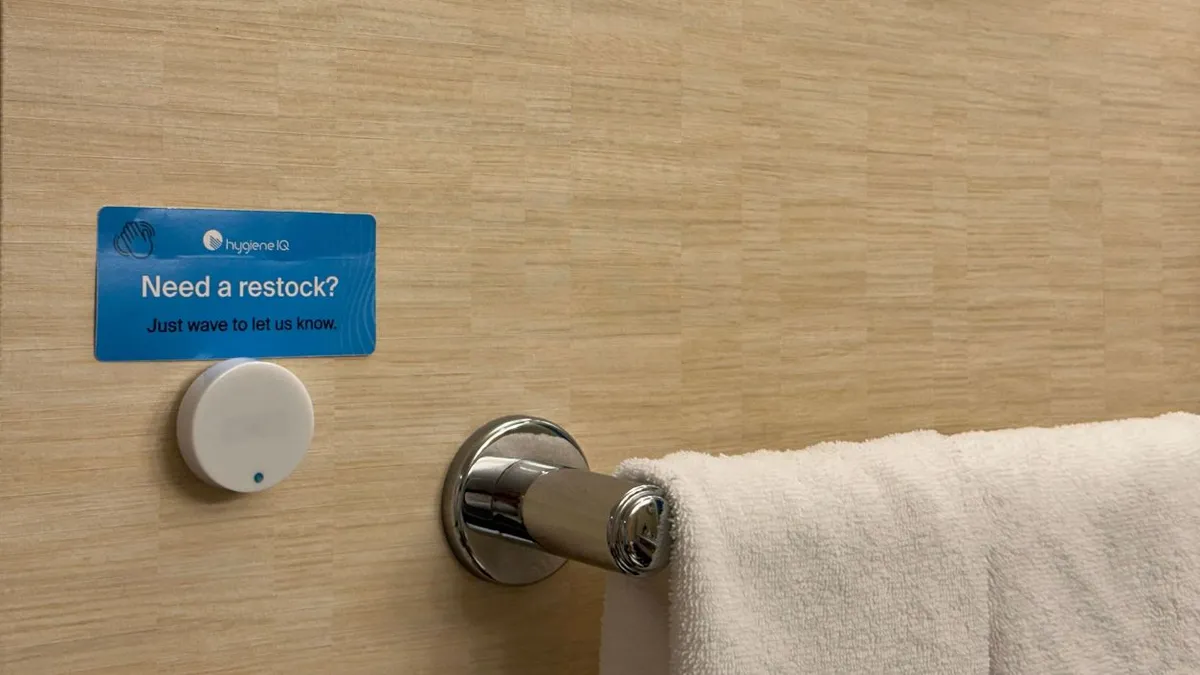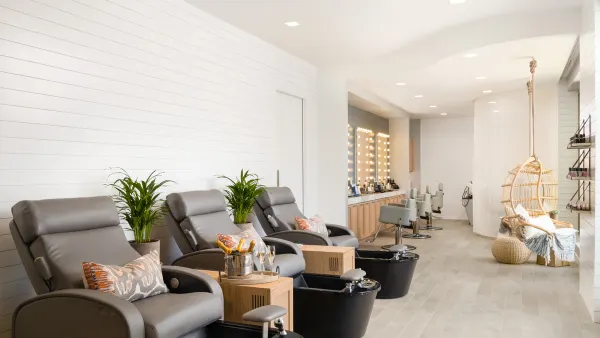Hotel Tech-in is our regular feature that takes a closer look at emerging technology in the hospitality industry.
Hygiene IQ was developed to track how often medical professionals washed their hands. Its wall-mountable sensor can detect motion in front of it — such as hands moving vigorously before a sink.
But just as its product was ready for testing, the COVID-19 pandemic hit, locking the Los Angeles-based company out of medical facilities. Hygiene IQ had to pivot, fast, and consider which other industries could benefit from its sensor technology. One stood out: hospitality.
The move is working out well for Hygiene IQ. “We're much more focused now on the hospitality sector rather than healthcare,” Founder and CEO Richard Adams told Hotel Dive.
Hygiene IQ’s technology hit the market in 2020 after pilot runs at restaurants such as the fast-food chain Del Taco. Its first customers in the hospitality space were primarily quick-service restaurants, but earlier this year, the company launched in the hotel industry. Though hotels are still testing the product, Adams said, “we’re getting really good feedback.”
Hotel Dive sat down with Adams to discuss the potential applications of sensor technology in the hotel space and how cleanliness helps with guest retention.
How it works
At restaurants, Hygiene IQ sensors are placed near toilet paper racks and paper towel dispensers. Signs instruct guests to wave their hands in front of the sensors if supplies need to be restocked, which alerts employees via an app.
Hygiene IQ is currently testing the same model at hotels, in addition to “proactive” sensors, Adams noted.
A proactive sensor can, for instance, be set to track soap dispenser usage: After the dispenser is used a set number of times, hotel staff receive a notification saying it’s time to refill.
Meanwhile, a reactive sensor allows guests to alert staff of needs, say, by a pool where towels need to be restocked, or in the hallway when they’ve set out their dirty breakfast tray. “There's nothing worse than that in the hotel, having trays out in the corridor of other people's food,” Adams said.
Hoteliers can purchase the system’s sensors in a kit, which can then be self-installed. The devices connect to the on-property Wi-Fi, which allows them to ping hotel staff when a sensor detects a hand wave. “Generally a kit takes 10 to 15 minutes to set up,” Adams noted.
Hotels’ needs
Hygiene IQ decided to offer its product to hotels after attending restaurant trade shows, where “we were getting approached by hotel staff,” Adams said.
“So we thought, there's a lot of other use cases here, and we did some market research. We interviewed a bunch of operations directors for hotels, just to see what their needs were or pain points,” Adams said. “It seemed like a natural progression for us.”
Hygiene IQ is pitching its product as a way to increase customer retention, as well as respond quickly to guest needs. The company found that, at the average hotel, losing a guest due to poor cleanliness would result in an average $1,000 in missed business. If a hotel were to lose 10 customers in a year, that would be $10,000.
Adams also said the product can streamline on-property operations. In addition to alerting hotel staff of an issue, the Hygiene IQ app can create to-do lists that can be distributed to different employees.
“You can set it with the building names, floor numbers and room numbers, so that the right staff get the right to-do lists, which then really aids in efficiency,” Adams said. “So you're not checking every room. You can really just go to the rooms where you know there's issues.”
That efficiency could help hotels feeling the effects of the ongoing labor shortage.
Adams said Hygiene IQ envisions even more uses for its product — both inside hotels and out. He noted that the company recently spoke to a pest control expert who found that the sensors could detect pests going past. “He was blown away,” he said.
“There's potential for it everywhere — hotels, restaurants […] warehousing, everything,” Adams said. “We're constantly seeing new use cases.”










